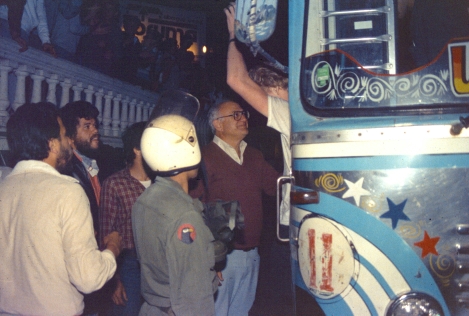 Sunday night, December 15.
Sunday night, December 15.
We arrived at the San Pedro Toruma youth hostel about 10:30 p.m.
After a long and worrisome wait at the Toruma, Blase Bonpane greets us as we disembark. The soldier is there for a reason.
|
Ivan's Place |
|
Contact me Home page Table of Contents The International March for Peace in Central America |
|
The ride from the Panama-Costa Rica border to San José took some 10 hours. If memory serves, we traveled over one of the highest points on the Central American portion of the Pan American Highway, over 11,000'. I recall a stop at a restaurant at a high elevation. It was cold and dark. |
|
|
|
|
|
|
|
|
|
|
|
|
|
|
|
|
|
|
|
|
|
|
|
|
|
|
|
|
|
|
|
|
|
|
|
|
|
|
|
|
|
|
|
|
|
|
|
|
|
|
|
|
|
|
|
|
|
Top Contact me Home page Table of Contents Page last updated November 6, 2024 |